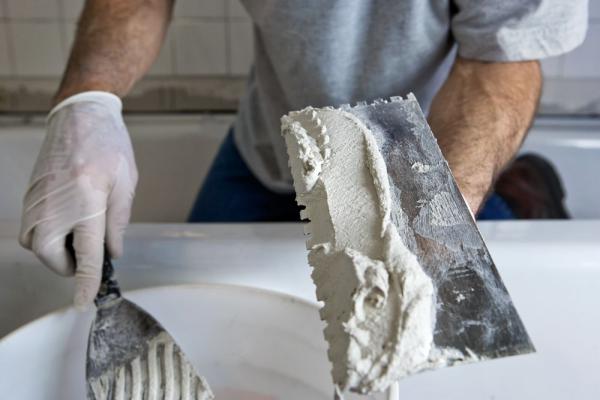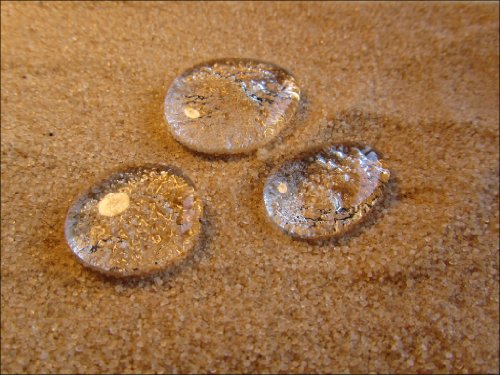Plastering walls - rightfully one of the most sought-after ways to design surfaces in the house. The overall picture of the attractiveness of the interior and the facade depends on the appearance of these surfaces. So that in the future it did not have to rewor the unsuccessful repair fulfilled, for the preparation of the solution, only high-quality source materials take care of the solution and carefully treat the choice of the most suitable recipe, based on the features of the decorated surface and the set of other criteria.
Content
Component composition composition of plaster
The entire structure of the plaster mixture for walls consists of three main component groups:
1. A knitting element. Most often, the following materials with such a property are used for the solutions for the plaster of the walls:
- clay;
- gypsum;
- lime
- cement.
2. Filler. The main function of this material is an increase in the strength characteristics of the solution and an increase in the volume of the mixture. For this purpose, such materials are used:
- slag;
- sand;
- shavings;
- sawdust.
2. Water. The liquid allows you to give the desired mixture consistency for the most convenient application to the surface.
To prepare a solution for plastering walls of the facade and internal surfaces of buildings, mixtures of decorative character are also used, the component composition of which includes:
- lime or alabaster for color treatment of walls;
- portland cement for wall decoration inside the construction and facades;
- marble, tuff, granite, dolomite, mica, glass for increasing the strength of the coating and give a special shine.
Important! Artificial or natural components of the following species are added as dyes:
- ocher;
- ultramarine;
- chromium oxide;
- surik Iron.
Types of solutions of plaster
There are many varieties of the composition of the solution for plastering walls, the distribution of which to individual groups occurs according to the principle of the binding element taken as the basis.
Below in the list contains the most common combinations:
- clay;
- clay and cement;
- clay gypsum;
- clay-lime;
- lime;
- lime-gypsum;
- lime-cement;
- cement-sand;
- cement-lime.
Also classify the types of a mixture for the purpose, the distinctive feature of which serve as proportions of the solution for plastering walls and a suitable complex of materials of all groups. In this direction, these options are distinguished:
- decorative;
- for interior decoration;
- for rough finishes;
- facade.
Technical characteristics of plaster
The strength of the future coating determines the solution of the solution for plastering walls. This indicator means temporary resistance to compression, is measured in kg / cm2. Based on the composition of the mixture, these stamps are established:
- 4;
- 8;
- 15;
- 30;
- 50;
- 80.
Depending on the characteristics of the thermal conductivity, the mixtures of the following types are determined:
- heavy, otherwise referred to as cold, whose volumetric weight is over 1500 kg / m3. The composition uses heavy fillers, which contributes to high heat resistance;
- easy or warm, volumetric weight of which is less than 1500 kg / m3. They contain materials with low thermal conductivity.
Important! It is the second type of mixtures that are often used to shock all sorts of floors and walls. The most popular experts note the clay solution for plaster walls.
In addition to the above criteria, characteristics, when choosing a suitable type, the following indicators take into account:
- adhesion;
- plastic;
- consistency of volume or shrinkage of the mixture after applying;
- frost resistance;
- grappling time.
Features of choosing plaster under a certain type of base
To each treated surface, it is necessary to individually select the type of plaster mixture, since it is not always one material combined with another.
Familiarize yourself with the following features of the selection:
- To process wood and gypsum, select a gypsum-lime or clay-lime version.
- For facades from concrete or other stone of artificial and natural origin, which is constantly affected by weather conditions, acquire a mixture based on a slag-cement or portland cement.
- For stone facades of artificial and natural breeds that are not subjected to weather influences, plastering material based on cement or lime.
Important! In such premises, like a bathroom, sauna, sauna, laundry, where the level of humidity constantly fluctuates, be sure to use cement-based plaster as a basic layer.
Recommendations for the preparation of solutions
The cooking process includes several consecutive procedures:
- Before kneading all building materials, seek through the sieve, the size of the cells of which is 5 * 5 or 3 * 3 mm.
- Prepare a reservoir for the kneading solution. Metal pelvis, bucket, barrel, box, or any other container are suitable as container. Size Select the amount of solution that you can spend respectively.
Important! Rectangular or square tanks are best suited.
- Choose a suitable tool for the kneading solution. It may be the usual Kelma, but it is best to stop your choice on a drill with a special nozzle (mixer). With it, you will receive a homogeneous consistency of the solution without lumps, as well as reduce the time of cooking plaster.
- Mix all the ingredients thoroughly, accurately withstand the specified proportions before receiving a homogeneous mass.
- Check the quality of the resulting solution. To do this, determine its consistency with the help of a trowel:
- if the composition is nalip pieces on trowel, then such a solution is considered "fat" and it must be diluted with water;
- if the mixture slides on the trin, it is called "skinny" and the binder should add to its composition;
- if the mixture completely wolfed the Kelma and created a thin crust on it, then such a solution is considered completely ready for use.
Recipes of cooking plaster
To obtain a high-quality plastering solution of proper consistency, follow the following proportions when preparing a suitable view from below the proposed.
Recipe number 1 - limestone dough
- negained lime - 2 part;
- water - 6 parts.
Recipe # 2 - Cement mortar
- sand - 3-2 parts;
- cement - 1 part;
- water.
Important! Such a solution has ultra-high strength and is used for outdoor robot.
Recipe number 3 - cement-clay solution
- sand - 3-5 parts;
- clay dough - 1 part;
- cement - 0.2 parts.
Important! The clay dough is a liquid mass of water and clay.
Recipe number 4 - cement-lime mortar
- sand - 3-5 parts;
- cement - 1 part;
- lime dough - 1 part;
- water.
Important! The limestone dough is also a mass of the average degree of fluid, for the preparation of which is used dry powder and water.
Recipe No. 5 - Lime Solution
- lime - 1 part;
- cement - 3 parts.
Recipe No. 6 - Lime-Gypsum Solution
- alebaster or dry gypsum - 1 part;
- lime dough - 3 pieces.
Recipe number 7 - lime-clay solution
- lime dough - 2 parts;
- sand - 15-18 parts;
- clay dough - 6 pieces.
Important! The most part of the sand you add, the stronger the strength of the solution is.
Recipe number 8 - clay gypsum solution
- sand - 3-5 parts;
- clay dough - 1 part;
- gypsum - 1/4 of part.
Video
Review the video on how to quickly prepare a plaster solution from a suitable ready dry mixture from the manufacturer. The principle of preparation from individual components is similar to, only it is necessary to mix dry substances in the desired proportion independently.
Conclusion
The preparation of the plaster mix itself is not complicated. The main condition for obtaining a qualitative result is to take into account all the features of the structure and conditions for subsequent operation when choosing a specific recipe. Equally, it is equally important to adhere to these rules for proportions and technology of application of the composition in the formation of the coating. In this case, you will succeed to achieve the most durable coating with a long time to preserve integrity.







































